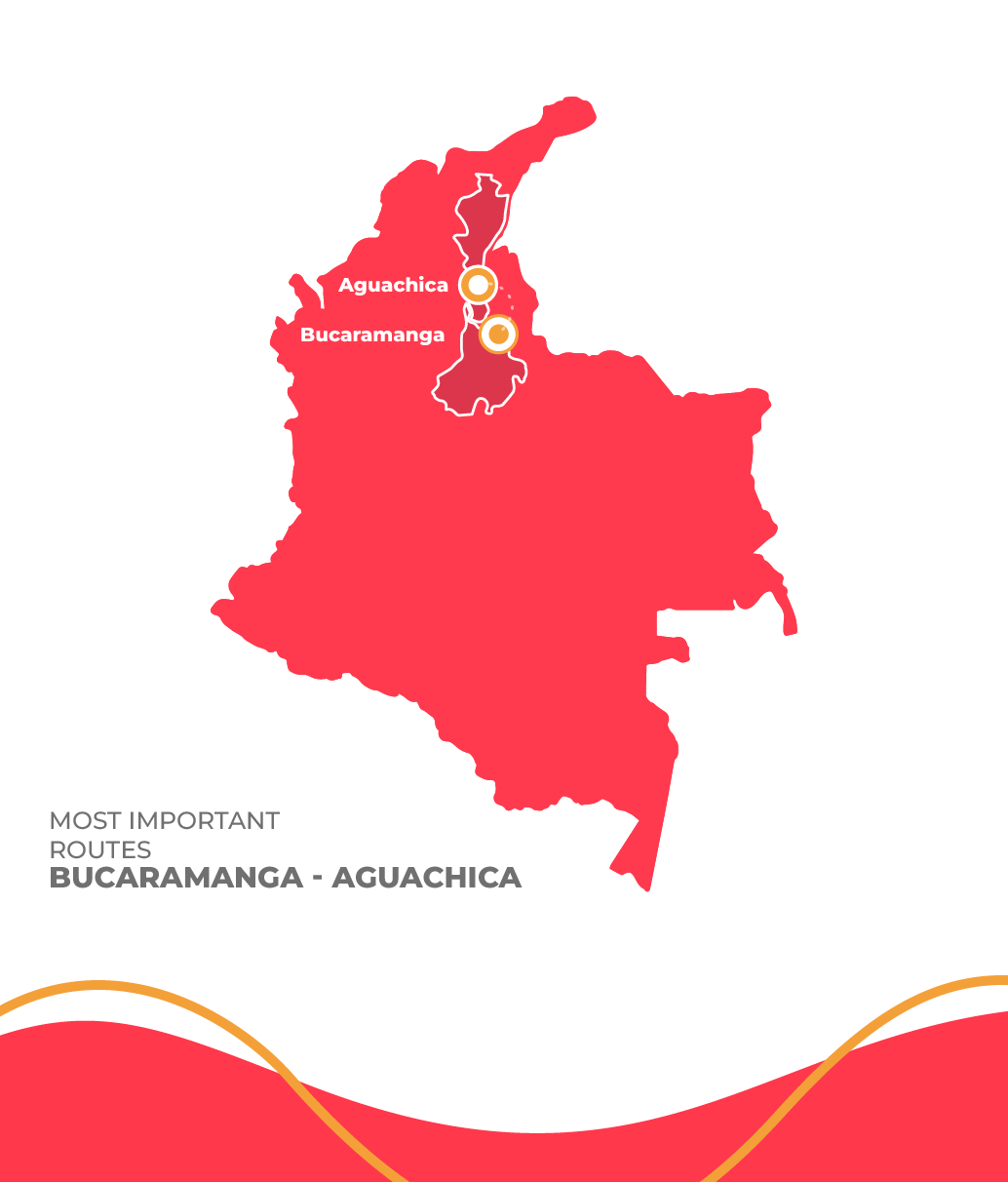Buy Bucaramanga (San) to Aguachica (Ces) Bus Tickets Online - Unlock Extra Savings with redDeals on redBus
Reserve a bus from Bucaramanga (San) to Aguachica (Ces) with redBus, Peru, and grab exclusive redDeals. Choose from 2 deals on 2 bus operators and avail yourself of discounts up to 25% on your bus travel!
About Bucaramanga
Bucaramanga is situated at 959 m a.s.l. in an area that used to be populated by the indigenous guanes, being in close proximity with other tribes such as the chibchas, chitarreros, laches and muiscas. Bucaramanga was established as a native town in 1622 and some mines were operated by the spaniards were established in the neighboring areas.During the XIXth century the town formally became a "Villa". At the end of that century it endured political struggles between craftsmen and traders, while during the XXth it had to endure the misery left over from the Thousand Day's War. The city managed to thrive and became one of the most important cities in modern Colombia. Its touristic atractions and hotel enterprises made the city grow and is now known as the "Pretty City". It also has very atractive parks, which earned the nickname "The City of Parks".

Why book a Bucaramanga (San) a Aguachica (Ces) bus with redBus?
You can also time-to-time redBus offers while booking your bus tickets online from Bucaramanga (San) to Aguachica (Ces). Follow a simple, fast and secure bus booking procedure. This helps save time and also helps to create a joyful travel experience!
About Aguachica
Aguachica is a Colombian municipality located in the Department of Cesar, north of the country between the Andes and the Magdalena River. During the beginnings of the Republican Era the city became attractive for the cultivation of coffee. Afterwards, petroleum was discovered in the city, which motivated a second wave of investment and migration towards the city. Also, the creation of new highways connecting the city with the Caribbean contributed to a major growth in the cuty.Known as the City of the Middle Magdalena, and for its midway position between the mountains and the ocean, it has developed an important tourism industry, in order to host travelers of all kinds and needs. It also has attractive ecotourism destinations nearby.
This destination is perfect for those seeking tranquility and exploring unique tropical landscapes. Aguachica also stands out as a meeting point between Caribbean and Andean cultures.
Weather in Aguachica
Aguachica has a tropical warm climate, with average temperatures of 30°C year-round. These conditions make it an ideal destination for sun and heat enthusiasts.
Hotels in Aguachica
Hotel Oasis
Services: Comfortable rooms, restaurant, and free Wi-Fi.
Location: In the center of Aguachica, near the main square.
Price range: From $60,000 COP per night.
Hotel El Balcón del Río
Services: Air-conditioned rooms, a pool, and a restaurant offering typical food.
Location: Near the river, with beautiful views.
Price range: From $80,000 COP per night.
Restaurants in Aguachica
La Cueva Restaurant
Services: Typical cuisine from Cesar, featuring grilled meat and fresh fish.
Location: In the center of Aguachica.
Price range: From $20,000 COP per person.
El Peñón Restaurant
Services: Grilled dishes and traditional food in a relaxed, family-friendly atmosphere.
Location: In a residential area in the southern part of the city.
Price range: From $25,000 COP per person.
Tourist attractions in Aguachica
Cesar River
The Cesar River is a natural attraction perfect for boat rides, recreational fishing, and enjoying the surrounding landscapes. Its calm waters provide an ideal space for relaxation and connecting with nature.
Aguachica Main Park
Located in the heart of the city, this park is a gathering spot for locals and visitors. Its green areas and peaceful atmosphere make it an excellent place to rest or spend time with friends and family.
Santa Teresa Church
This colonial-style church is located in Aguachica's city center. It’s a historical and architectural landmark, perfect for history and religious architecture enthusiasts.
How to get from Bucaramanga (Santander) to Aguachica (Cesar) by bus?
Distance: 190 kilometers.
Travel time: Approximately 4 hours.
Departure terminals: Bucaramanga Transport Terminal.
- Arrival terminal: Aguachica Transport Terminal.
